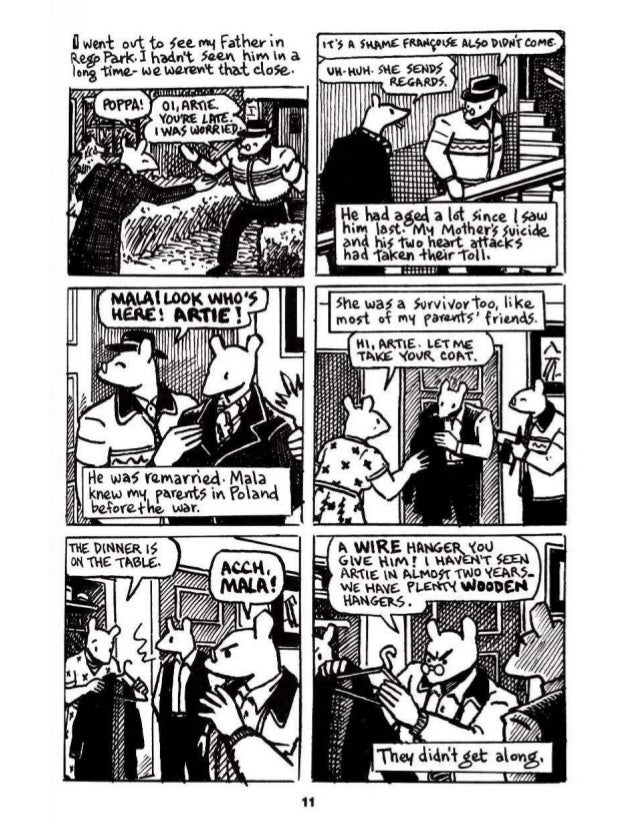Art Spiegelman Maus Pdf Italiano
Maus ii art spiegelman pdf Non stiamo parlando de La fattoria degli animali ma di Maus, di Art Spiegelman, il capolavoro a fumetti che racconta lolocausto. Art Spiegelman - Maus Racconto di un sopravvissuto [Cbr Ita] [TNTvillage] Ebooks: 99.69 MB: Gottinga - Davide Osenda - Fumetto di Matematica [Pdf - ITA] [TntVilla. Here you can download free art spiegelman maus parte 1 pdf shared files found in our database: art spiegelman maus (spanisch, 100mb).pdf from mega.co.nz host Art.
Oscar Peterson Flac Discography Torrents. From the BBC programme, February 5, 2012. Art Spiegelman (; born Itzhak Avraham ben Zeev on February 15, 1948) is an American cartoonist, editor, and comics advocate best known for his. His work as co-editor on the comics magazines and has been influential, and from 1992 he spent a decade as contributing artist for, where he made several high-profile and sometimes controversial covers. He is married to designer and editor and is the father of writer. Spiegelman began his career with the bubblegum card company in the mid-1960s, which was his main financial support for two decades; there he co-created parodic series such as in the 1960s and the in the 1980s. He gained prominence in the scene in the 1970s with short, experimental, and often autobiographical work.


A selection of these strips appeared in the collection in 1977, after which Spiegelman turned focus to the book-length Maus, about his relationship with his father, a survivor. The postmodern book depicts Germans as cats, Jews as mice, and ethnic Poles as pigs, and took thirteen years to create until its completion in 1991.
It won a special in 1992 and has gained a reputation as a pivotal work, responsible for bringing scholarly attention to the comics medium. Spiegelman and Mouly edited eleven issues of Raw from 1980 to 1991. The oversized comics and graphics magazine helped introduce talents who became prominent in, such as,, and, and introduced several foreign cartoonists to the English-speaking comics world. Beginning in the 1990s, the couple worked for The New Yorker, which Spiegelman left to work on (2004), about his reaction to the in New York in 2001. Spiegelman advocates for greater comics literacy. As an editor, a teacher at the in New York City, and a lecturer, Spiegelman has promoted better understanding of comics and has mentored younger cartoonists.
After Spiegelman's release from, his mother committed suicide. Spiegelman attended Harpur College from 1965 until 1968, where he worked as staff cartoonist for the college newspaper and edited a college humor magazine. After a summer internship when he was 18, Topps hired him for Gelman's Product Development Department as a creative consultant making trading cards and related products in 1966, such as the series of parodic trading cards begun in 1967.
Spiegelman began selling self-published on street corners in 1966. He had cartoons published in underground publications such as the and traveled to San Francisco for a few months in 1967, where the underground comix scene was just beginning to burgeon. In late winter 1968 Spiegelman suffered a brief but intense, which cut his university studies short. He has said that at the time he was taking with great frequency. He spent a month in, and shortly after he got out his mother committed following the death of her only surviving brother. Underground comix (1971–1977) [ ] In 1971, after several visits, Spiegelman moved to and became a part of the underground comix movement that had been developing there.
Some of the comix he produced during this period include The Compleat Mr. Infinity (1970), a ten-page booklet of explicit comic strips, and The Viper Vicar of Vice, Villainy and Vickedness (1972), a work in the vein of fellow underground cartoonist. Spiegelman's work also appeared in underground magazines such as,,, Real Pulp, and Bizarre Sex, and were in a variety of styles and genres as Spiegelman sought his. He also did a number of cartoons for such as,, and. In 1972, asked Spiegelman to do a three-page strip for the first issue of Funny Aminals [ ]. He wanted to do one about racism, and at first considered a story with African-Americans as mice and cats taking on the role of the. Instead, he turned to the Holocaust that his parents had survived.
He titled the strip 'Maus' and depicted the Jews as mice persecuted by die Katzen, which were Nazis as cats. The narrator related the story to a mouse named '. With this story Spiegelman felt he had found his voice.